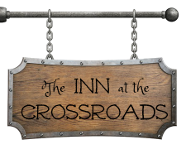“Littlefinger turned away. ‘Boy, are you fond of potted hare?’ he asked Podrick Payne.” (II:199)
 Elizabethan Potted Hare
Elizabethan Potted Hare
Our Thoughts:
This quirky dish, still found in the UK, might be one of our new weekend staples. The Elizabethan version is quite basic in flavor as it contains only a few spices, but this allows the taste of the rabbit to come through. Ours didn’t hold together too well, and so ended up more a confit than a pate, which was still very good.
The modern potted hare is fantastic. The thyme gives the rabbit a wonderful savory flavor, and the reduced fat adds a creamy texture that is awesome spread over crackers. The rabbit sets very well, and should be molded into any shape for a fun, interesting presentation.
Bottom line? Well worth the effort, and tasty. We served ours as part of a ploughman’s platter, with pickle, chutney, apples, cheese, and hunky bread.
Elizabethan Potted Hare
A Hare Hashed.
Cut it out in quarters, chine it, and lay it in Clarret, mixed with three parts of water, and parboyl it, then slice the flesh in thin pieces, and lay it on your stew pan, let this be off the Body, but the legs wings, and head whole, almost cover it with some of the liquor it was boyled in, add some Butter, sliced Nutmeg, the juce of Lemon, and a little beaten Ginger, serve it upon sippets, Garnish it with Lemon, and sliced Onion.
–The Whole Duty of a Woman: Or a Guide to the Female Sex, 1696
Our changes: *NOTE* This dish is best prepared a day in advance. Potted meats are basically stewed meat and herb that are ground after stewing and packed into a terrine. So we’ve used the basic recipe for hashed hare and finished it as you would a potted recipe. Also, can we please just take a moment to appreciate the title of the original source? Hilarious.
Ingredients:
- 1 rabbit, cleaned
- 1 part red wine
- 3 parts water
- 1/2 teaspoon nutmeg
- 1/2 teaspoon ground ginger
- 1/2 lemon, juiced
- stick butter, clarified
Cut the rabbit into manageable pieces and place into a large pot. Add one part red wine to three parts water until the meat is covered and simmer until flesh is falling off the bone (several hours).
Strain off liquid and pull all meat from the bone, discarding the bones (what broth is left can be made into a soup — waste not!). Grind down by hand or in a food processor, adding spices, and lemon juice. Pack loosely into a terrine, add a bit of the broth, then pour over with clarified butter to completely seal and coat. Cover with clingfilm and refrigerate for at least one day before eating.
Modern Potted Hare
Ingredients:
- 1 rabbit, cleaned
- 1/3 lb. smoked slab bacon, cut into lardons
- 1 pigs trotter, washed
- 1 onion, peeled and quatered
- 2 stalks celery, chopped
- 2 carrots, peeled and chopped
- 5 thyme sprigs, 1 Tablespoon thyme
- 2 bay leaves
- 1 glass white wine
- 2 teaspoons Dijon mustard
- Salt and pepper
- Olive oil











